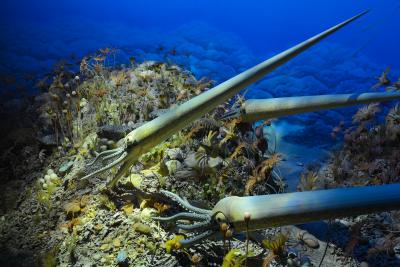Chicago and Milwaukee are built upon rock that was once carbonate mud on a tropical seafloor located at 20° South latitude 430 million years ago during the Silurian Period.

In Milwaukee, shallow water with strong currents produced many reefs 10 meters tall. In Chicago, which had deeper water, these reefs thrived and grew over 100 meters tall and were the largest biological structures, and had the richest biodiversity in a community the world had produced up until this time.
How do we know this?
From over 125 years of research and collecting fossils, many of which are in the collections of the Milwaukee Public Museum and the Field Museum. The joint virtual project (linked below) uses these fossils reefs as a vehicle for students to learn general principles, local details, and environmental significance of the study of the ancient past.

